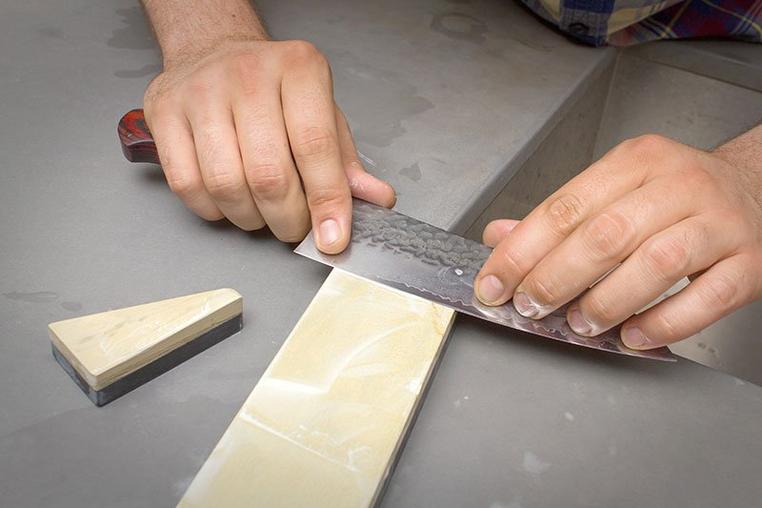Sharpening with a Coticule whetstone
Sharpening a knife on a whetstone is something you need to get used to, and something you need to practice. We have written quite a bit about Japanese whetstones. However, sharpening your knives on a coticule whetstone is not the same as sharpening on other stones. It is something we love to tell you more about.
Sharpening a straight razor
Do you want to sharpen a straight razor? If you do a Coticule stone is perfect for you. However, kitchen knives, pocket knives, chisels and other tools can also be sharpened using these Belgian sharpening stones. Coticule whetstones, previously known as Belgian chunks, are natural products. The stones will leave you with perfectly polished results. The material isn’t porous which means it won’t absorb water or metal particles. As such, when you decide to sharpen your knives on a Belgian chunk you will only need a little water.
Slurry stone
To sharpen your knives with a Coticule sharpening stone you will need slurry, also called sharpening paste. This is a lightly-coloured paste which emerges when you rub a slurry or dressing stone over the wet surface of a whetstone. A slurry stone is a small part of Coticule which will enable you to quickly make slurry. A dressing stone is an artificial stone you can use to make slurry from the Coticule. As such slurry is essential to sharpen your knives on a Coticule stone. Never rinse off the slurry!
Grainsize Coticule whetstone
The difference between an artificial water stone and a Coticule stone is that you can determine your own grain size because of how the sharpening particles – garnets – have been formed inside the stone and how they move in between the stone and the knife.
As such, with the help of a thick layer of slurry, you can sharpen your knife with a grainsize comparable to a 1000 grain Japanese water stone. If you dilute the slurry you will end up with a finer grainsize. In the end you will be left with a thin layer of water. As a result you will be moving the knife over the sharpening stone without adding any pressure. As such you will even reach a grainsize of 8000 enabling you to neatly polish the edge of the blade.
Sharpening results
Because of the unique composition of the Coticule stones the sharpening results will be very even. Classic razors and Coticule whetstones are therefore a match made in heaven. The sharpening particles in the slurry, the garnets, are shaped like obtuse angles. This unique composition ensures that an open razor which has been sharpened on a Coticule natural whetstone smoothly moves over your skin. Especially when you strop your razor after sharpening it you will find that shaving will be easier. These sharpening results have also been praised in kitchen knives and other tools.









